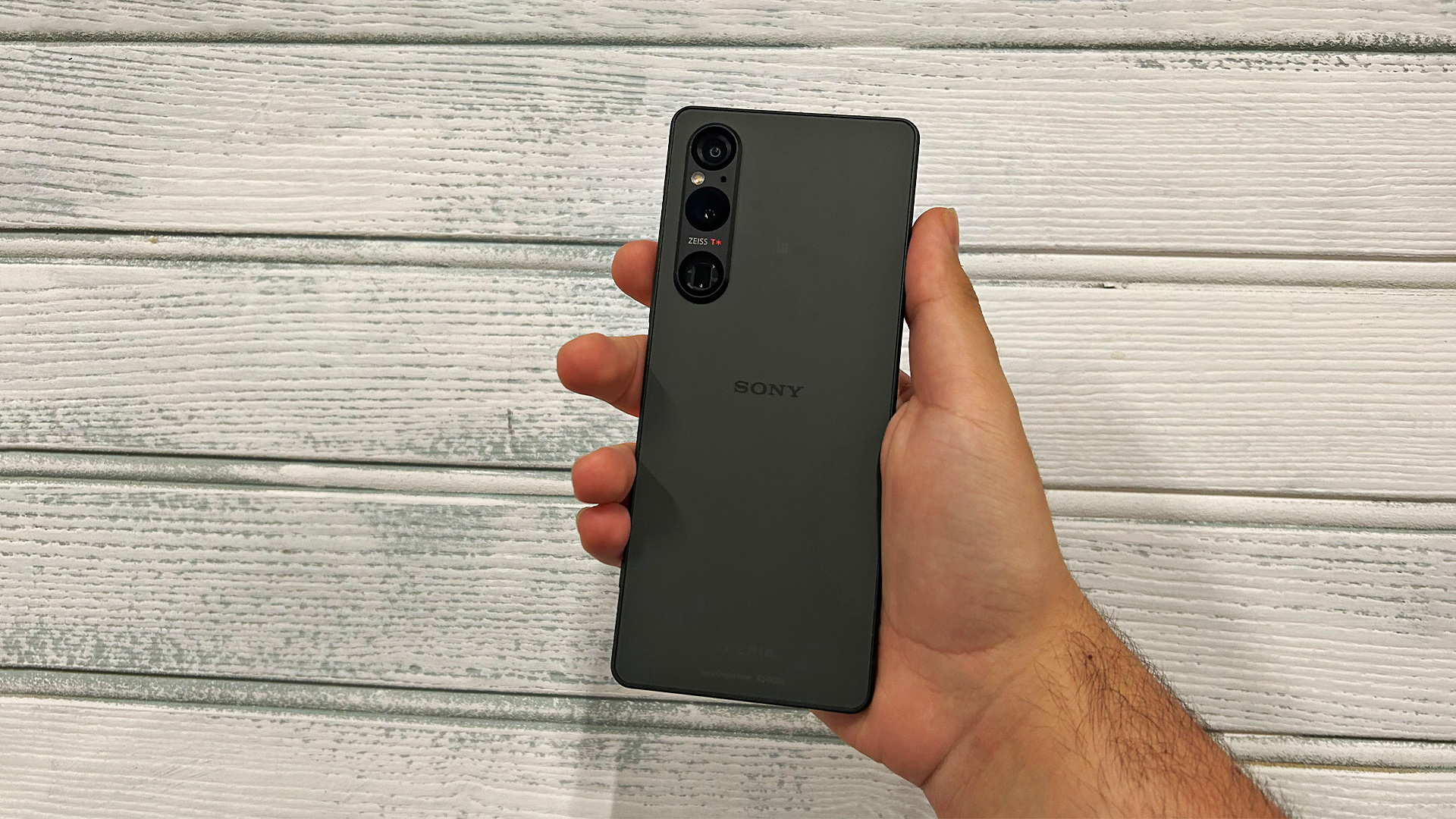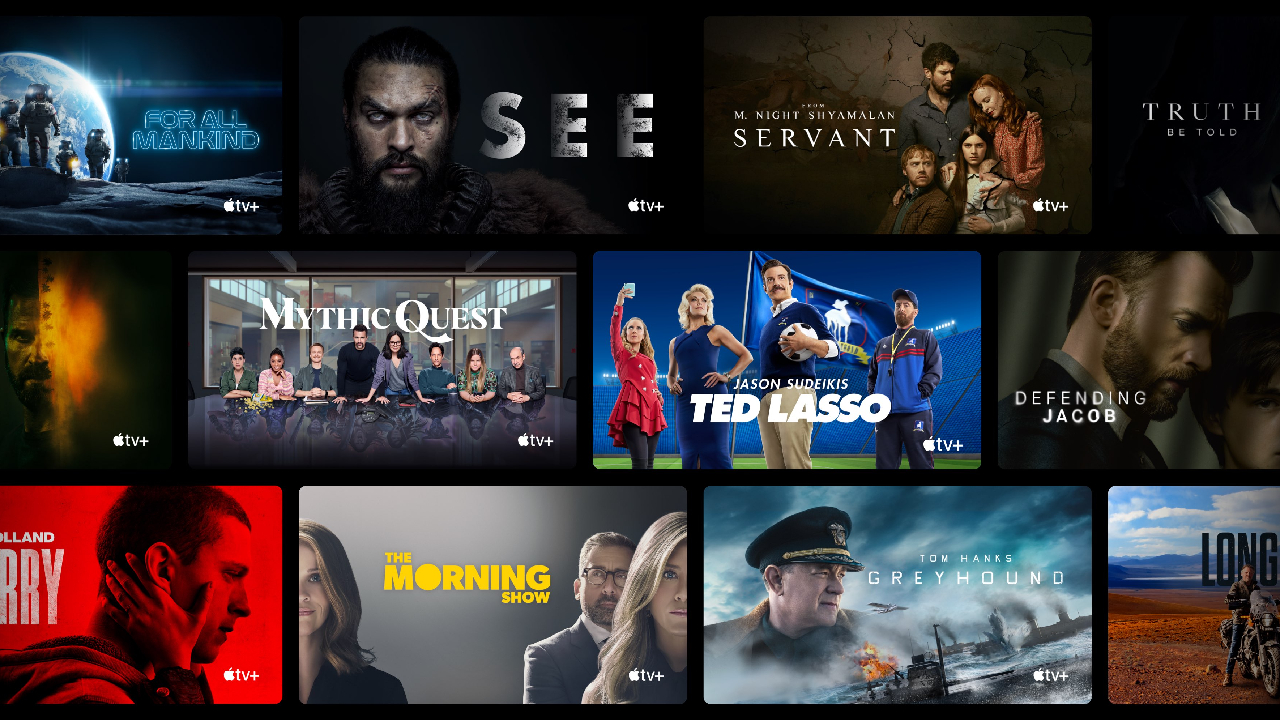What Hi-Fi? Verdict
Sony’s cinematic flagship smartphone impresses us once again, with upgrades in all the key areas
Pros
- +
Cinematic picture for a smartphone
- +
New design looks and feels great
- +
Wired and wireless audio compatibility
Cons
- -
Tall screen can be awkward at times
- -
Expensive
Why you can trust What Hi-Fi?
The Sony Xperia 1 has long been our go-to recommendation if you want a flagship Android smartphone that prioritises the AV experience. Every generation since 2020 has earned five-star reviews from us, with the Mark II and III versions both bestowed with What Hi-fi? Awards.
Now we have the latest model, the Sony Xperia 1 V, in hand; with upgrades to the build, features, picture and sound, it certainly looks as though this could be another knockout from Sony.
Price
Sony is bucking a trend established by Apple and Samsung in the past year; the Xperia 1 V costs the same as its predecessor. Available in Black, Platinum or Khaki for £1299 / $1399, the 1 V doesn’t appear to be launching in Australia, which is unfortunate.
We are, of course, pleased to see the Xperia’s price stay the same, but it remains a rather expensive piece of kit. It does seem, however, taking its Apple and Samsung peers into account as well, that we need to accept that the days of flagship smartphones costing under a grand are well and truly over. The Apple iPhone 14 Pro costs £1199 / $1099 / AU$1899 and the Samsung Galaxy S23 Ultra comes in at £1249 / $1199 / AU$1949, meaning both options are slightly cheaper than this Sony but not by much.
Build
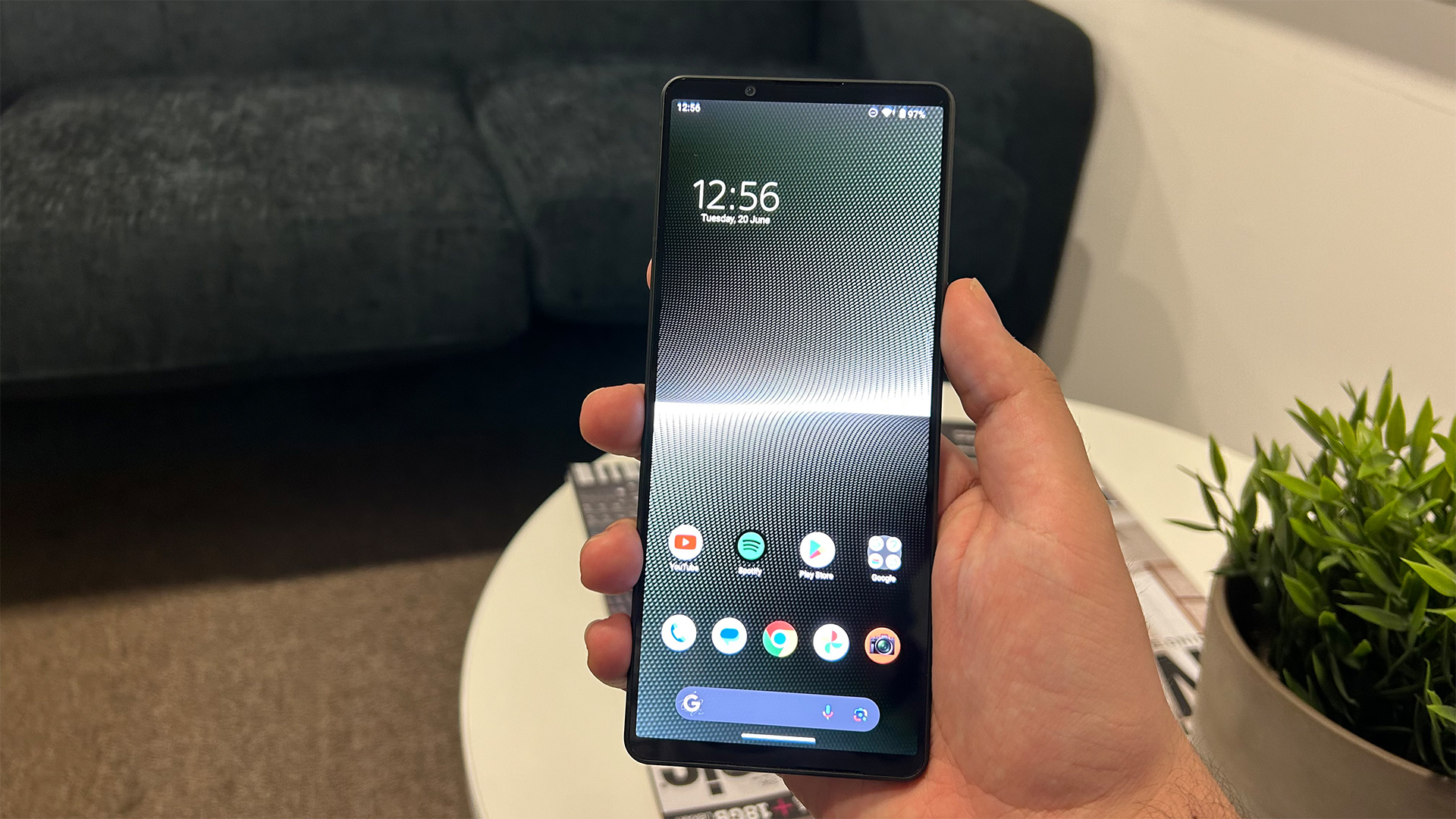
Sony’s Xperia 1 series has been in desperate need of a facelift for some time now, as trying to distinguish between the III and IV is less like a game of Spot the Difference and instead more akin to Where’s Wally (Waldo for our American readers). Thankfully, the Xperia 1 V’s build has been upgraded in a few ways. These may seem inconsequential at first, but they are actually some of the best attributes of this new device.
The smooth matt glass on the rear of the previous model is replaced with a textured Gorilla Glass Victus that does more than enhance the device’s appearance. As it features a 21:9 screen, the device is taller and skinnier than your average smartphone, making it slightly unwieldy – especially when you need to reach up to the top of the screen to swipe down for the notification shade. The new texture on the back makes the phone feel much grippier, and those feats of hand gymnastics far less risky.
This improvement in handling extends into the new ridged aluminium rails, which also make the phone feel more secure. Here is where you will also find the returning USB-C connector, volume controls, combination lock button/fingerprint scanner, textured camera shutter button and, last but certainly not least, the 3.5mm headphone jack. Finally, the camera housing on the rear is slightly redesigned, with the flash and rear-facing microphone now incorporated into the larger module.
Moving around to the front of the device we are met with a more familiar scene, with the Xperia 1’s trademark 6.5-inch 21:9 aspect ratio display making its return. This time it is covered in Gorilla Glass Victus 2 for enhanced protection against drops and scratches. As a whole, the Xperia 1 V’s new design adds a more premium feel to the device, which is welcome.
Features
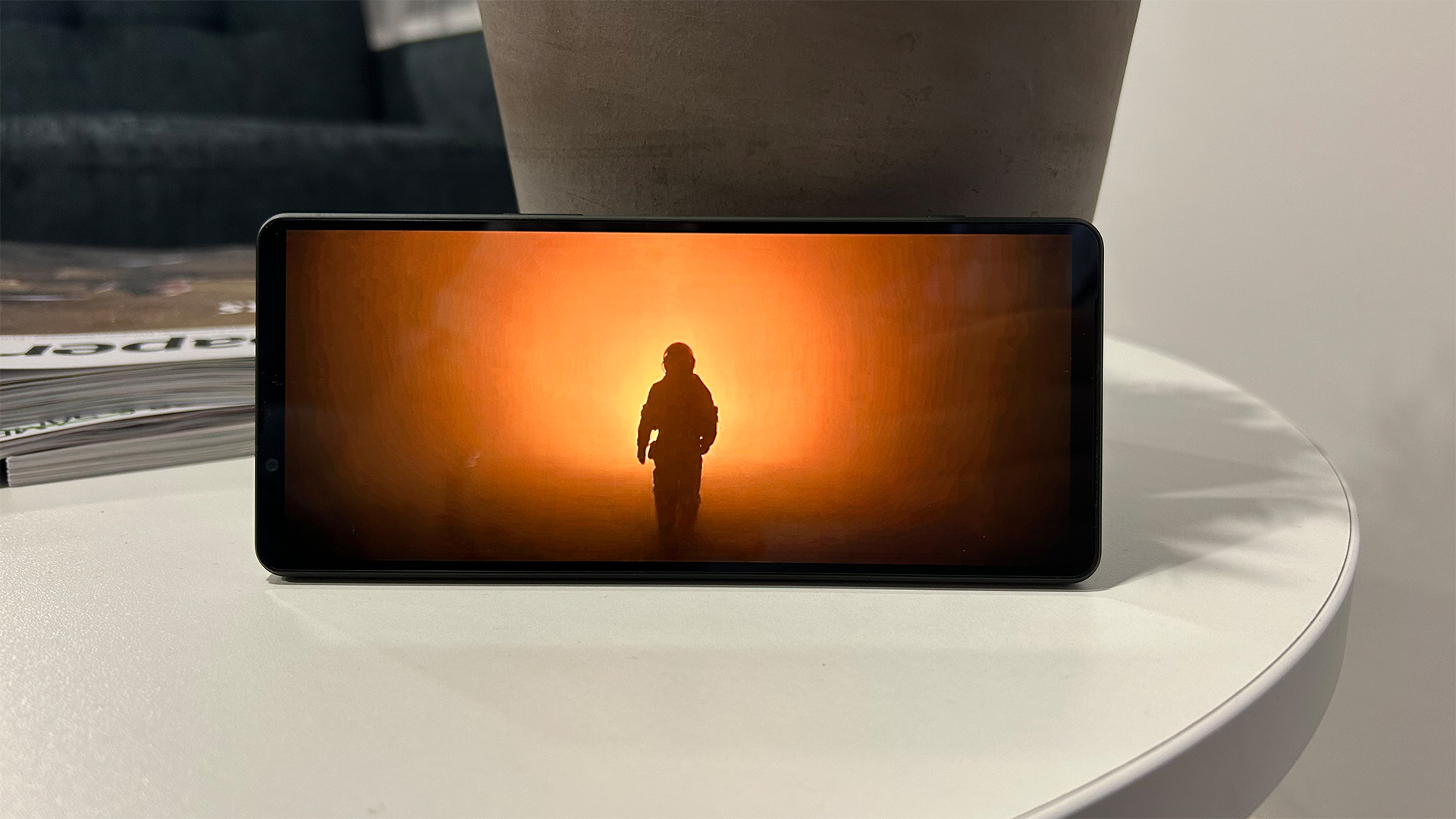
Sony’s flagship phones tend to be the definition of “feature-packed”, so what does this Xperia bring new to the table?
Starting with its internal specification, it now uses Qualcomm’s latest Snapdragon 8 Gen 2 chipset backed by 12GB of RAM. There are two storage options: 256GB and the less widely available 512GB model. and the storage capacity can be upgraded further via the MicroSD card slot. As of now, this Sony is running Android 13, although the company has promised that it will provide at least two years of software updates to the device.
Screen size 6.5 inches
Screen type OLED
Screen resolution 1644 x 3840 (643ppi)
Finishes x3 (Black, Platinum, Khaki)
Operating system Android 13
Storage 256GB / 512GB
RAM 12GB
In use, the new Sony feels a bit snappier than its predecessor, and the overall software experience feels slightly slicker. We are yet to come across any stuttering within the user experience, although this is no surprise, given the specification would give most laptops a run for their money.
Moving onto the star of the show, the Xperia 1 V’s display. Why is that 6.5-inch 21:9 aspect ratio display important? Well, it’s the same aspect ratio that most films are shot in, meaning when you play supported content from Netflix, Disney+ or Sony’s own Bravia Core app, you should get a full-screen experience with no obstructions, black pillars or letterboxing. What makes the screen even better is that it's a 4K HDR OLED panel with a pixel density of 643ppi, resulting in incredible detail. In comparison, the iPhone 14 Pro Max features a pixel density of 460ppi. The display is 120Hz (as is that of its Apple rival), which means scrolling through social media feeds and mobile gaming both feel smoother than phones with lower refresh rates.
It is worth noting, though, that some apps aren’t optimised to deal with the uncommon aspect ratio, so can leave some areas of wasted space towards the top and bottom of the screen.
Audio features are equally satisfying, not least because Sony remains one of the very few manufacturers still to include a headphone jack on its phones. The Xperia supports hi-res audio when paired with a decent pair of wired headphones, and when it comes to wireless options, the Xperia has Bluetooth 5.3 with the LE, aptxHD, aptx Adaptive and LDAC codecs; and you can enable Dolby Atmos within the sound settings of the device too. The phone also features a front-firing stereo speaker arrangement, which floors the usual earpiece and bottom-firing speaker setup we see on most other phones. More on the performance of that later.
The Sony’s biggest new feature this year is the camera system, with a 48MP main sensor making its debut. Called the ‘Xmoor T for Mobile’ sensor, it's a capable camera when it comes to everything from quick snaps to tricky low-light photography. It is paired with a sophisticated interface, designed for professional use, which was developed alongside Sony’s Alpha camera division – although you can find a more streamlined interface within the standard camera app.
The Xperia 1 positions itself towards professional creators with various tools and tricks, including the ability to livestream directly from the camera app and even use the phone as a 4K camera monitor by hooking it up to a compatible Sony snapper. In practice, the software can be somewhat daunting, but the camera produces clean and detailed images.
Rounding out the phone’s feature set we have a 5000mAh cell that easily provides a day of use depending on the tasks. Streaming in 4K obviously kills the phone off quicker, but regular day-to-day activities such as social media and music streaming don’t strain the battery as much. Sony advertises that you can charge the phone up to 50 per cent in 30 minutes as the phone is capable of up to 30W wired charging speeds; however, you won’t find a USB adapter or cable in the box, so you will need to provide your own. The phone also supports wireless charging, as well as reverse wireless charging for other devices – especially useful for charging a dead wireless earbuds case.
Picture
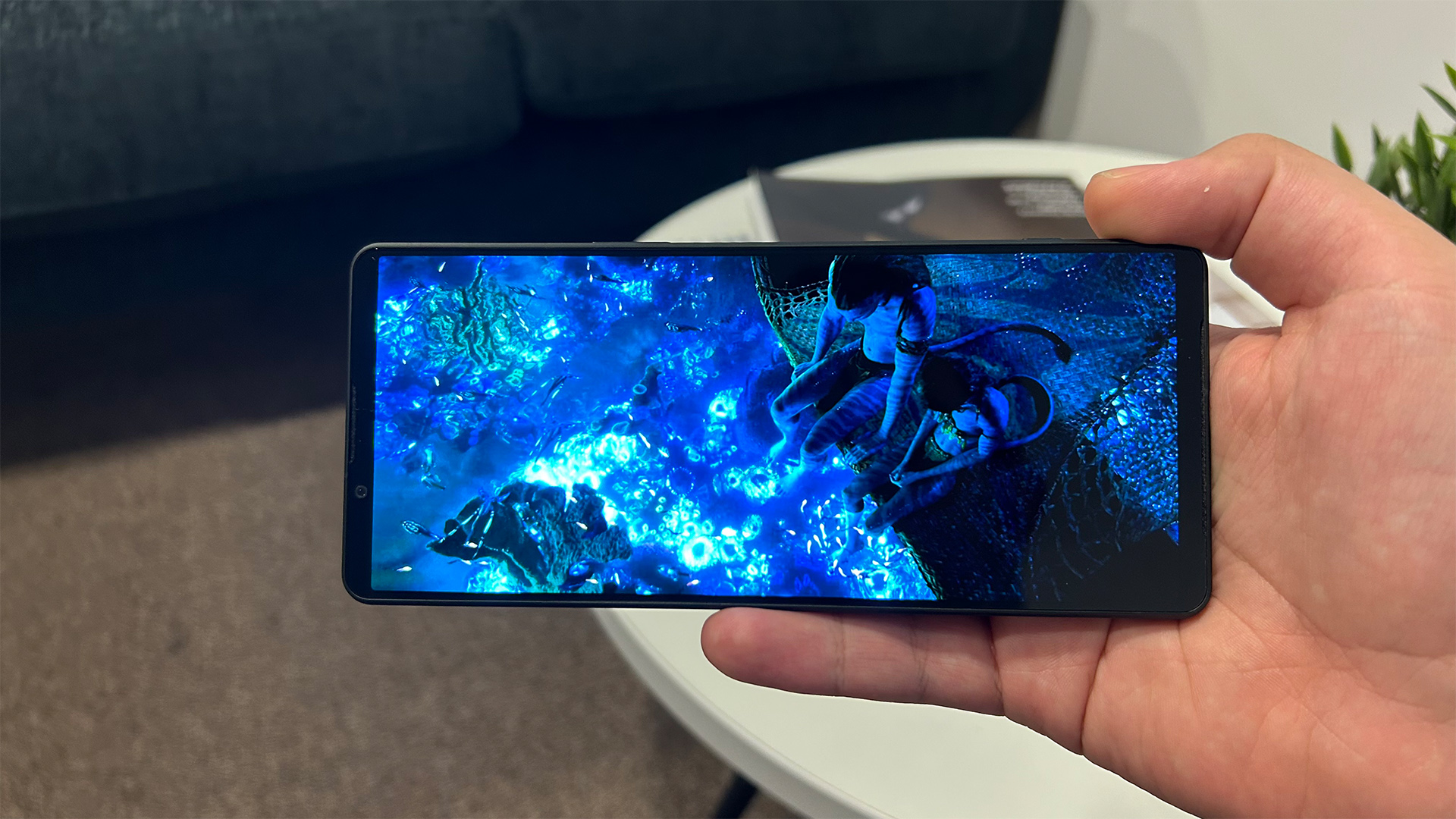
The Xperia 1 V shares many characteristics with the last generation when it comes to picture performance, although there are some subtle upgrades across the board that help nudge it slightly ahead of its excellent predecessor. Sony knows how to capture the cinematic feeling on a smartphone by now, and this handset proves that its winning screen formula is still effective five generations on. We set the display to Creator Mode, the brilliant preset that's designed to deliver content as close as possible to the creator’s intent.
We kick things off with Rogue One: A Star Wars Story – already in the ideal 21:9 aspect ratio, although the Disney Plus app allows streaming only up to 1080p HD resolution. Even so, we can see the Xperia 1 V’s medley of visual strengths on display, starting with the impressive three-dimensionality of the image. During the opening scene, as the villainous Krennick looms in the foreground, the phone’s considered handling of contrast, shading and carefully defined (but not overly sharp) outlines results in an image with tangible depth.
The 1 V’s image is slightly cleaner and those edges are a touch sharper than before, which accounts for the more three-dimensional image. Fast-moving objects in this scene, such as the swooping Imperial Shuttle or the frantic character movements, appear smooth and avoid stuttering.
Colours are also slightly richer, delivering an appreciated warmth to characters' skin tones and a slightly deeper and richer green to the alien planet’s flora. These punchier colours are particularly striking in the CGI-heavy Avatar sequel The Way Of Water, also on Disney Plus. A scene taking place at night, illuminated by bioluminescent organisms, shows us a vibrant display of various shades of blue, green, purple and turquoise. Characteristically, the Sony phone begins to embody the much larger Bravia OLED TVs in terms of presentation, which is impressive considering the phone is tiny in comparison.
As the scene takes place at night, we get to experience the OLED display’s strength when it comes to black depth. The night sky is convincingly deep, with the contrast once again impressing with plenty of pinpoint white and blue stars punching through. Dark details are also solid, with defined environmental textures present even in sections of the scene cast in shadow.
Rounding things off with a test of something a bit older and in standard definition, the Xperia handles an episode of Peep Show on Netflix admirably. Despite the lower resolution, the display is still plenty sharp enough, and the richer colours add some vibrancy to the older material, making for a perfectly watchable display.
Sound
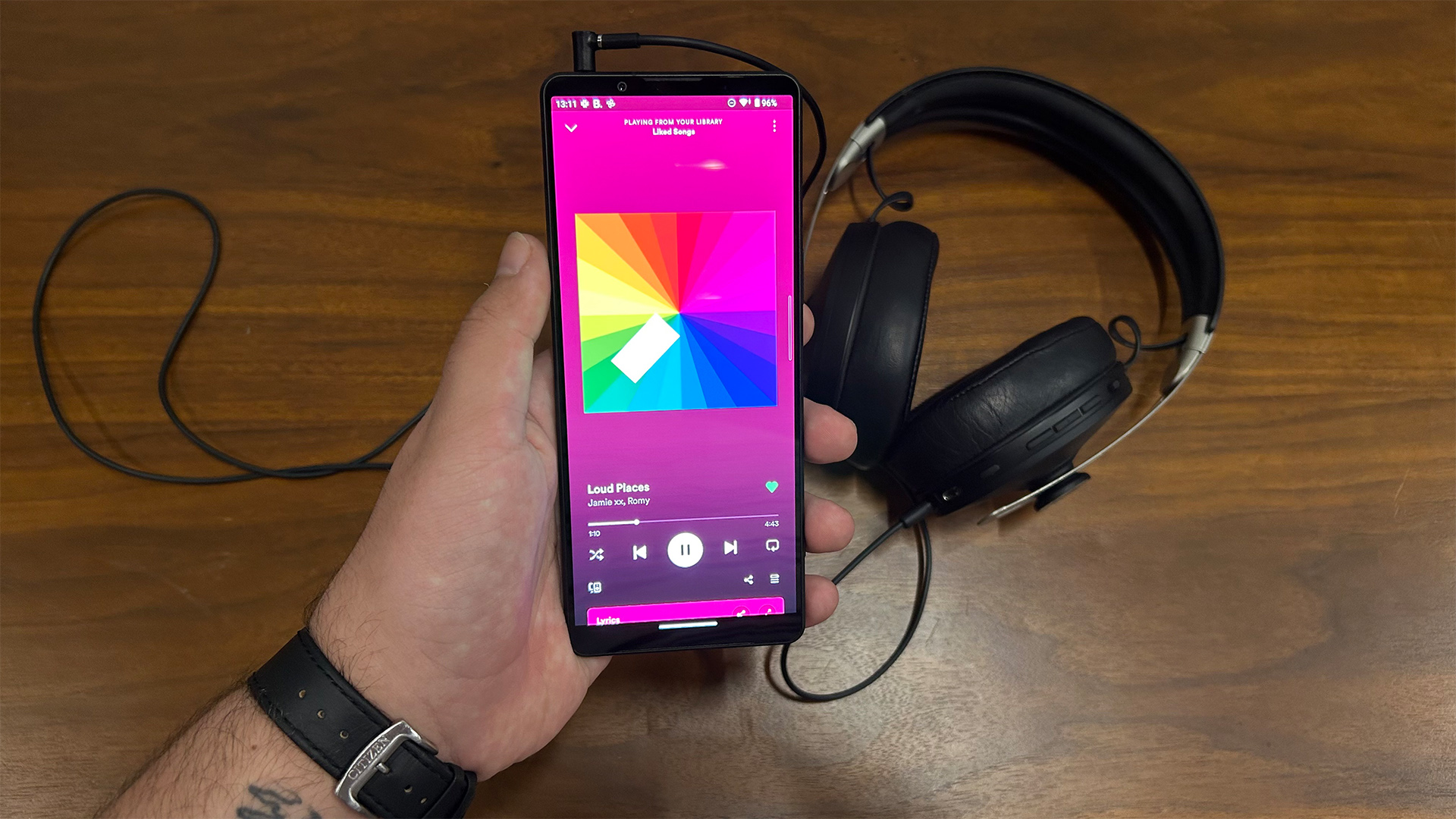
As was the case with the Xperia’s picture, the sound performance is reminiscent of its predecessor in many ways, with a few enhancements to ensure a performance upgrade.
Notably, the sound of the Xperia 1 V offers slightly more clarity, with Bon Iver’s opening verse in Taylor Swift’s Exile sounding articulate and well defined. During the duet section of the track, the complicated arrangement of vocals, building rhythm and instrumentation is handled well, with each component given ample room to breathe. In many ways, the Sony does a good job of replicating the environment of the original recording, with its rich and natural presentation.
Moving to something a bit more upbeat, Jamie XX’s Loud Places offers a solid rhythmic drive with its tapping percussion. It's also a good example of the Xperia’s capable handling of dynamics, as the track’s low-key introduction builds to the louder and punchier chorus in an effective swell of sound.
The Sony’s built in speakers are well placed and offer a decent amount of separation (mostly due to the length of the phone), but, inevitably, they are still not the ideal option when listening to music. Vocals are decently clear and timing is acceptable, but the sound is lacking in the dynamics and bass we hear through headphones.
Verdict
Sony once again makes a case for its 4K flagship phone by providing yet another Xperia 1 that nails picture, sound and features. The unique form factor still won’t appeal to everyone, and there are some Sony-specific software quirks, but they can easily be overlooked in favour of this phone’s performance.
This is still undoubtedly a phone for AV enthusiasts. If you are serious about taking your movies and music on the go, you will be hard-pressed to find a better alternative.
SCORES
- Picture 5
- Sound 5
- Features 5
MORE:
Read our Sony Xperia 1 IV review
Also consider the Samsung Galaxy S23 Ultra
These are the best smartphones you can buy right now
What Hi-Fi?, founded in 1976, is the world's leading independent guide to buying and owning hi-fi and home entertainment products. Our comprehensive tests help you buy the very best for your money, with our advice sections giving you step-by-step information on how to get even more from your music and movies. Everything is tested by our dedicated team of in-house reviewers in our custom-built test rooms in London, Reading and Bath. Our coveted five-star rating and Awards are recognised all over the world as the ultimate seal of approval, so you can buy with absolute confidence.
-
jjbomber Pre-order with O2, EE or GiffGaff and you get a free pair of WH-1000XM5 headphones. Given these are £350 and multiple award winning headphones, that makes this phone rather cheap, putting it in the Pro column rather than the Con.Reply
